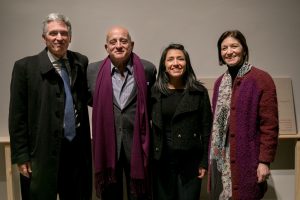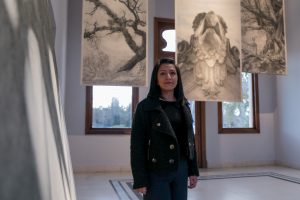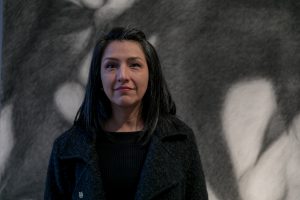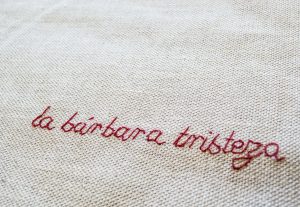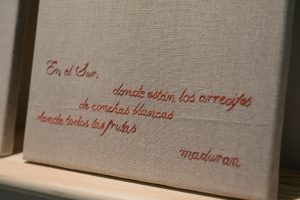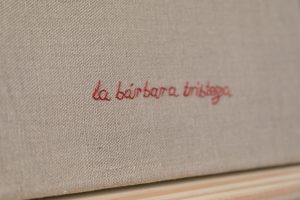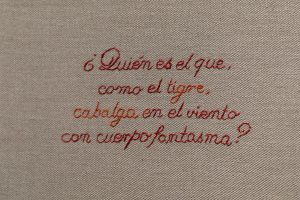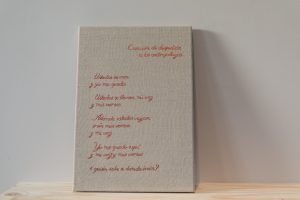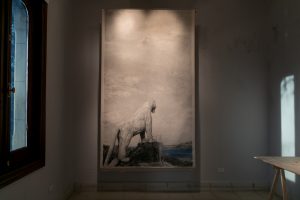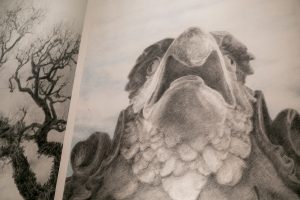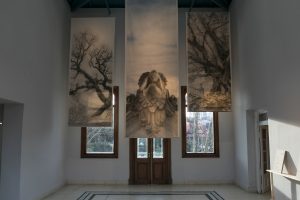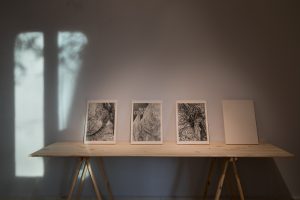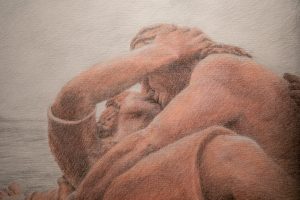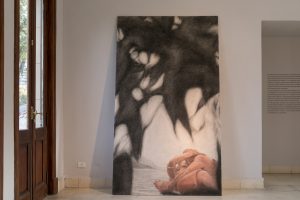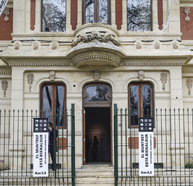-
Don’t say I don’t know how to catch the wind
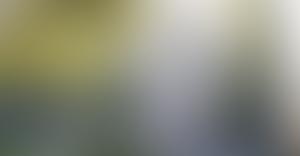
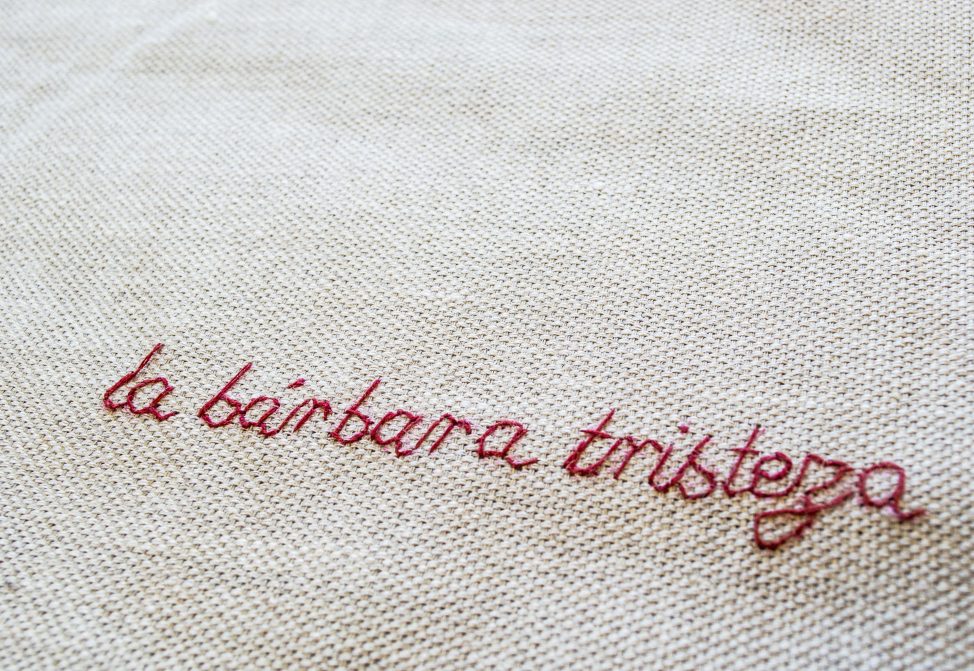
-
Don’t say I don’t know how to catch the wind

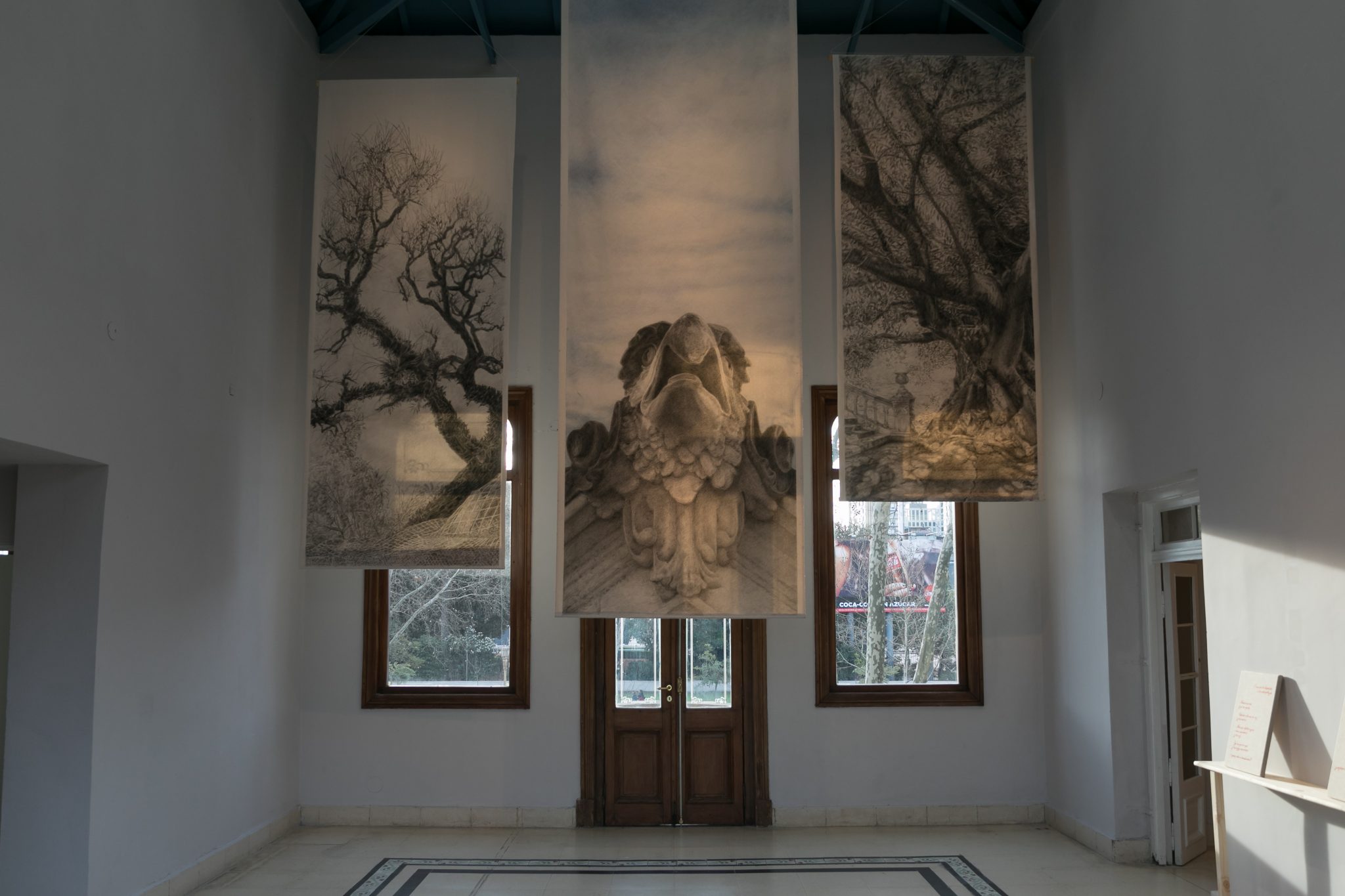
Presentation
At the MUNTREF Art and Nature Center, exhibitions of Argentinean artist and biologist Pablo La Padula and Peruvian artist Claudia Coca were inaugurated.
The new exhibitions at MUNTREF Art and Nature Center, Zoología Fantástica (Fantastic Zoology) by Pablo La Padula, and No digas que no sé atrapar el viento (Don’t say I don’t know how to catch the wind), combine science with art, and invite viewers to have a critical look, proper to the scientific world, without evading the social aspect that vindicates the tradition and history of peoples, while highlighting the particular link between humans and nature.
“The relationship of human beings with nature was perhaps the first theme to appear in the history of art. The artistic representation of nature is closely linked to the social perception of the natural world, while artists contribute to a progressive change in the way they relate to it and visualize it,” said rector Aníbal Jozami, director of the Museums of the Universidad Nacional de Tres de Febrero (MUNTREF), during the opening of the event. Pablo La Padula has a great trajectory in the scientific world and Claudia Coca captured in her works the Latin American sense in relation to the rescue of traditions and their conjunction with art,” said Jozami.
The work of La Padula can be seen on the ground floor of the former confectionery El Águila and invites us to reread the historical-cultural marks that reside in the scientific devices and their interpretations, as well as in the decisions that are taken for scientific diffusion, and the forms that these constructions assume in the social imaginary. The materials that are used, the assembly, the lighting and the system of organization, unite to place the spectator in the place of the scientist.
“I don’t care if this show is artistic or scientific. It is a challenge and I want to state with it that art and science are two instruments to know reality and neither is above the other”, said La Padula. In addition, she recalled the importance of the zoo in her career as a place of daily visit during her childhood, a situation that contributed for her studying biological sciences.
The MUNTREF Art and Nature Center, located in the former Buenos Aires zoo – in the process of becoming an Interactive Ecopark – is the fifth museum of the Universidad Nacional de Tres de Febrero. The building where the mythical El Águila candy store used to operate was recovered by UNTREF.
Diana Wechsler, director of the Department of Art and Culture and of the UNTREF Specialization and Master in Curatorship in Visual Arts, and curator, together with Benedetta Casini, of both exhibitions, highlighted the importance of having managed to reinvent this space: “We are very happy to have had the chance to occupy this space that, not long ago, was a ruin. We can begin to imagine that from this place other things can be housed and that is part of the challenges that we propose to ourselves and of the challenges that we draw”.
On the other hand, Don’t say I don’t know how to catch the wind, by Peruvian artist Claudia Coca, places the city and all its inhabitants, from humans to animals and plants, on the first floor of this center, in a revisited context. In this project, the words are present, quoting verses from the “indigenous poetry” of the Americas, along with other Latin American voices. The artist, winner of the MUNTREF Art and Nature Center Art Residence grant, emphasized the weight of the link that the artist establishes with society. “Contemporary art is following the path of the construction of thought and knowledge,” she said.
Also present at the inauguration were Peru’s ambassador to Argentina, Peter Camino; Leontina Etchelecu, advisor to the Government of the City of Buenos Aires on Historical Heritage Management; renowned plastic artists Marie Orensanz, Cecilia Catalin, Diana Schufer, Diego Bianchi and, the Iranian, Reza Armarmesh; and art collectors Juan Cambiaso, Sergio Quattrini and Florencio Vals.
“The work of these artists invites us to think with this space, with these materials, with different points of view and introduce ourselves into the relativity of the gaze, into the possibility of making historical trajectories and putting science and art together. Pablo’s and Claudia’s works are an invitation to become scientists and to realize that these places do not have a single view. You will be scientists with Pablo’s work and naturalists and travelers through Claudia’s critical gaze”, closed Wechsler.
The MUNTREF Art and Nature Center, located at 2725 Sarmiento Avenue in the Autonomous City of Buenos Aires, is open from Wednesday to Sunday from 14:00 to 19:00 hours. Those who wish to obtain more information may contact us by mail at muntrefarteynaturaleza@untref.edu.ar or by phone at 4805-0409.
-
CLAUDIA COCA
Claudia Coca: Visual artist. Her work provokes a critical reflection on contemporary political and cultural issues: crossbreeding, racism, gender and citizenship. She displated nine individual exhibitions: 2017, Cuentos Bárbaros-Otras Tempestades, Sala Luis Miró Quesada Garland, Lima. Cuentos Bárbaros-Territorios Cercanos, Galería del Paseo, Lima. 2015, Cuentos Bárbaros, UNESPACIO Project Room, Lima. 2014, Mestiza, Anthological Exhibition, MAC, Lima. His work is part of several collections: PAMM, Pérez Art Museum Miami, Museo del Banco Central de Reserva del Perú (MUCEM); Museo de Arte Contemporáneo de Lima (MAC-Lima); Museo de Arte de la Universidad Nacional Mayor de San Marcos (Lima); and Micromuseo (“al fondo hay sitio”) (Lima); in addition to numerous private collections in Peru and abroad.
CURATORIAL TEXTClaudia Coca
Don’t say I don’t know how to catch the wind
Claudia Coca’s commitment to her work is programmatic: each gesture tends towards emancipation in the face of the colonial thought that conditions lifestyles in Latin America. Nature in its most restless forms – the indomitable sea, the crouching eagle, the roots of the trees that grow uncontrollably from the cement that oppresses them – represents a possibility of rebellion, a proud vindication of the savage and the “barbarian”.[1].
Claudia translates to large-scale drawings figures of nature that she captures on the outside, making bodies and hidden spaces visible. The Andean puma that looks fiercely at Lake Titicaca and the couple, mixed in the primordial act of the kiss, embody a monumental marginality, a song to those Latin American territories that the artist obstinately rescues with the patience of her gestures.
Reconciliation with local traditions and the revaluation of craftsmanship are withdrawn in the monotonous action of embroidery. For several days, Claudia dedicates herself to suturing the weave of raw fabrics, leaving word scars. The cadenced voices of Latin American writers crystallize into harmonic silhouettes – Indian red on a natural background. Insistently penetrating the surface of the canvas with the needle, the artist searches for the most remote stories, healing with peace the amnesia suffered by these and many other verses.
In an opposite operation of annulment and subversion, fragmentary traces of charcoal blur the words “National Geographic” that head analogous raw canvases. Rhinoceros horns burst onto the canvas like peaks of mountains dotted with ruins, roots of ancient trees stretch towards the edges of the canvas, a ficus grows disorderly and ends in the embrace of a palm tree: the ambiguity of the images chosen by the artist undermines the dogmatism of the magazine’s traditionally ethnocentric and exotic representations. The indomitable nature advances until devouring and dismembering its content.
Benedetta Casini
Curator


